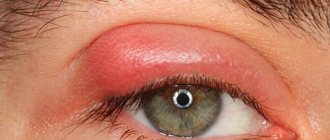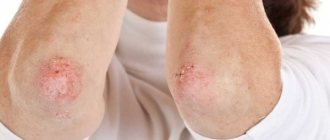For many people, the pigmentation process is disrupted over the course of their lives. This is evidenced by the appearance of dark spots on the back. Regardless of the shape, size and shade of the tumor, its removal will not lead to a positive result if the root cause of its occurrence is not eliminated. It is important to understand that a dark spot on the back (photo of the defect is presented below) is a reason to consult a dermatologist. This is due to the fact that pigmentation may indicate the development of serious pathologies.
General information
Melanin is produced in the body of every person. This is a pigment responsible for forming a kind of barrier that protects against the negative effects of ultraviolet rays.
As soon as the sun's rays hit a person's skin, specialized cells are activated and start the process of melanin production. This is how a tan appears. However, the process of pigment production can be disrupted under the influence of various provoking factors. As a result, dark spots can be found on the skin. Their color can be dirty yellow, beige or brown. Such dark spots on the back of a child or adult usually indicate the presence of a pathological process in the body.
Clinical manifestations
The disease can be determined by consulting a dermatologist by detecting dark brown or black spots, fibromas or papillomas, as well as signs of hyperkeratosis. The latter develops in response to exfoliation and roughening of the skin. The diagnosis requires clarification, especially since the disease is quite rare: with similar symptoms, it can easily be confused with other dermatological problems, wasting valuable time.
Manifestations are most often localized in the inguinal-femoral fold, on the elbows, on the skin of the armpits, in the intergluteal and popliteal areas, under the mammary glands. First, the surface darkens, then becomes rough, dry and thickens. The natural pattern takes on more pronounced features. At a later stage, the patient can seek help to remove papillomas in intimate places, however, if these formations are accompanied by tingling and mild itching, it is worth consulting with an experienced dermatologist first and undergoing additional tests.
Causes
Pigmentation disorders never occur on their own. If dark spots appear on your back, the following diseases and conditions may be the provoking factors:
- Increased sensitivity to ultraviolet rays. In such situations, a person burns even after a short stay in the sun. After this, dark spots appear on his body (back, stomach, face), which can be either flat or convex in nature.
- Disruption of the endocrine system. In such cases, dark spots on the back are called chloasma. Their formation is usually caused by excessive production of hormones. A similar condition occurs during pregnancy, menopause, and after the process of childbirth. Also at risk are women taking combined oral contraceptives.
- Natural aging processes. Against this background, the production of melatonin is also disrupted, due to which dark spots can appear not only on the back, but throughout the body.
- Lack of vitamins A and C in the body. In such cases, as a rule, the dark spot on the back is isolated. Its color is bright brown.
- Melanoma. This term refers to skin cancer. This is the most dangerous cause of increased pigmentation. At the same time, dark spots on the back look like a bruise, they are unevenly colored and have asymmetrical edges. New growths may also be gray or black in color.
- Angioma of the spinal cord. In such situations, the spots may also look like a bruise. This pathology is a benign tumor that affects the spinal cord and the vascular wall adjacent to it.
- Pathologies of the liver and gastrointestinal tract.
- Diseases of a gynecological nature.
The appearance of dark spots on the back does not always indicate a serious pathology. In some cases, they occur against the background of long-term use of medications and after poorly performed cosmetic procedures, for example, body wraps. In addition, dark acne spots may appear on your back. In this case, it is recommended to contact a cosmetologist who will help eliminate the defects.
Associated symptoms
The appearance of neoplasms can worsen a person’s quality of life, but not his overall well-being. The only sign that may appear due to the appearance of dark spots on the back is itching. But at the same time, it is important to know that it is impossible to injure the tumor with nails or improvised means.
If a dark spot on your back itches, the reasons may be the following:
- Avitaminosis.
- Taking hormonal medications, including oral contraceptives.
- Prolonged exposure to sunlight.
- Wearing tight clothing made from synthetic fabrics. In such cases, dark spots on the back not only itch, but also peel.
- Accession and active life of an infectious agent.
If the itching is constant and severe, it is unacceptable to postpone a visit to the doctor.
What are the causes of pityriasis versicolor?
The causative agent of pityriasis versicolor is a conditionally pathogenic species of yeast that is constantly present on human skin and is part of its natural microflora.
The development of tinea versicolor occurs only under favorable conditions:
- genetic predisposition;
- increased sweating and changes in the chemical composition of sweat;
- frequent use of antibacterial gels;
- long-term treatment with steroid hormones;
- elevated blood sugar levels;
- weakened immunity;
- sun radiation (excessive tanning)
- diseases of the gastrointestinal tract, liver, pancreas;
- violations of skin barrier functions.
Most often, pityriasis versicolor occurs in young people, both men and women, but it also occurs in children with weak immunity, diabetes and vegetative neurosis. A separate risk group is children who experience excessive sweating during puberty. The likelihood of developing tinea versicolor is increased by solar radiation, heavy metals, and clothing made of synthetic materials.
Diagnostics
If dark spots appear on the skin on your back, you should consult a dermatologist. The specialist will conduct an initial diagnosis and issue a referral for a comprehensive examination. Based on the results obtained, he will create the most effective treatment regimen (if the cause of the spots is a pathological process).
Primary diagnosis consists of interviewing and examining the patient. The doctor needs to provide information about how long ago the dark spots on the back appeared, whether there are any accompanying symptoms, and whether medication is currently being treated. After this, the specialist examines the tumors and makes a preliminary diagnosis.
To confirm it, the following studies are prescribed:
- Dermatoscopy.
- Scraping
- Clinical blood test.
Based on the diagnostic results, the doctor may additionally refer the patient for a consultation with an endocrinologist, allergist or oncologist.
Diagnostic measures that are carried out in the presence of age spots
A dermatologist diagnoses hyperpigmentation. During the initial appointment, he finds out the history of the disease (when the spot appeared, how it progressed, whether it has changed recently), and also conducts an examination. At this stage, the doctor carefully examines the patient’s skin, notes the number of pigment spots, their location, size, color and other features - these data are often enough to make a preliminary diagnosis. After this, the dermatologist may prescribe a number of studies:
- general and biochemical blood test;
- general urine analysis;
- dermatoscopy;
- biopsy;
- bacteriological examination of scrapings from the skin surface.
These studies make it possible to exclude concomitant pathologies and establish a final diagnosis.
Drug treatment
Currently, many products are sold on the pharmaceutical market that can lighten or completely eliminate age spots. However, even the most harmless, at first glance, drugs should be prescribed only by a doctor based on diagnostic results. If a person develops a serious pathological process in the body, self-medication will only worsen the situation.
The most effective medications:
- "Hydroquinone". The active components of the drug prevent the production of melanin, due to which existing spots gradually become lighter.
- "Retinol". Effective against acne spots. In addition, active substances help improve metabolic processes in the skin.
- "Skinoren." Designed to combat increased pigmentation that occurs against the background of acne and active fungal infection.
- "Clotrimazole". Has a whitening effect. Effective against fungi.
- Ointment "Zinc". It is not capable of causing allergic reactions, due to which it can be used even during pregnancy.
- Ointment "Sulfuric". Has an exfoliating effect. Helps remove the top layer of epithelium along with dark spots.
As a rule, such products must be used 1-2 times a day until the defect disappears completely.
Cosmetical tools
Currently, the following gels and serums are considered the most effective:
- EVEN OUT (Oriflame). This is a remedy that you can use to get rid of dark pigment spots on your back at home.
- Luminosity PRO (AVON). Sold in the form of gel and serum. Designed to even out skin color and lighten existing dark spots.
- Corrector serum from Vichy. Sold in pharmacy chains. Helps completely get rid of age spots throughout the body.
It is important to remember that using cosmetics does not eliminate the need to see a doctor. Such drugs should be used simultaneously with drug treatment.
Is tinea versicolor contagious?
Not all infected people develop clinical signs of tinea versicolor, which is why it is classified as a conditionally infectious disease. Ringworm is transmitted through clothing, towels, and bedding. Pityriasis versicolor does not threaten human life, but at its first manifestations you should consult a dermatologist. If you do not pay attention to the symptoms and manifestations of the disease and do not start treatment, the spots on the skin will remain for a long time.
During treatment you should not visit beaches, swimming pools and baths. Rehabilitation involves general and individual measures for the treatment and prevention of pityriasis versicolor, intended for patients and people who may come into contact with them.
General measures to prevent ringworm:
- carrying out disinfection with chlorine-containing substances in public places (swimming pools, baths, saunas, sports facilities, industrial enterprises, etc.);
- sanitary educational work.
Individual treatment measures for ringworm:
- hygienic skin care;
- boiling linen and towels, ironing them;
- treatment of chronic diseases that can cause the appearance of tinea versicolor;
- individual drug treatment prescribed by a dermatologist.
Hardware cosmetology
Pigment spots do not disappear after successful treatment of the root cause. You can get rid of them not only at home, but also in a cosmetologist’s office.
Experts identify the following procedures as the most effective:
- Cryotherapy.
- Laser treatment.
- Chemical peeling.
- Ultrasound treatment.
- Microdermabrasion.
All of the above methods help whiten the skin. In addition, during the process, the top layer of the epithelium is removed, which triggers regeneration processes.
What are age spots and what do they look like?
Normally, melanin is synthesized in the epidermis - the main pigment that gives color to the skin, hair and iris of the eye, and protects the body from exposure to ultraviolet radiation. When melanin production is disrupted, pigment spots form on the skin - areas with an increased or increased concentration of this pigment. Typically, pigment spots are oval or round in shape, and the color can vary from dark beige to dark brown and even black. There are several types of age spots that appear on the back:
- freckles. They often form on the face, arms, shoulders and upper back. They are located in large groups, they are able to independently appear (in spring) and disappear (in autumn and winter), details here.
- moles (nevi). They can be either small (1-2 mm) or quite large (sometimes reaching 3-4 cm or more). The danger of nevi on the back lies not only in the fact that there is a risk of their degeneration into a malignant tumor, but also in the fact that moles can be susceptible to mechanical influences: friction in contact with clothing, compression. Such exposure increases the risk of injury, which can lead to bleeding.
- chloasma. These are clearly defined pigment spots that can be located in groups and change color (become darker) when exposed to UV rays.
- lentigo. There are 3 types: senile, solar and juvenile lentigo. The pigment spots in this case are large and located singly.
- lichen versicolor. This type of pigmentation is characterized by the appearance of small foci that can merge with each other.
Only a dermatologist can accurately determine the type of pigment spot and choose the right treatment. Therefore, if one of the types of hyperpigmentation appears, you should urgently seek medical help.
Prevention
After successful treatment, it is important to prevent the recurrence of dark spots on the back. To do this, you must follow the following recommendations from doctors:
- Limit exposure to aggressive sunlight. In summer, the period from 10 a.m. to 5 p.m. is considered the most dangerous.
- It is necessary to use cosmetics containing sun protection factor. On labels it is marked with the letters SPF. The higher the protection factor, the better. It is recommended to use such products not only in summer, but also in winter.
- The diet should be complete.
- Treat all identified pathologies in a timely manner.
- Do not exceed the time spent in the solarium. This procedure involves the use of ultraviolet radiation.
- The use of any hormonal drugs should be strictly monitored by a doctor.
The above recommendations also apply to the primary prevention of dark spots on the back.











